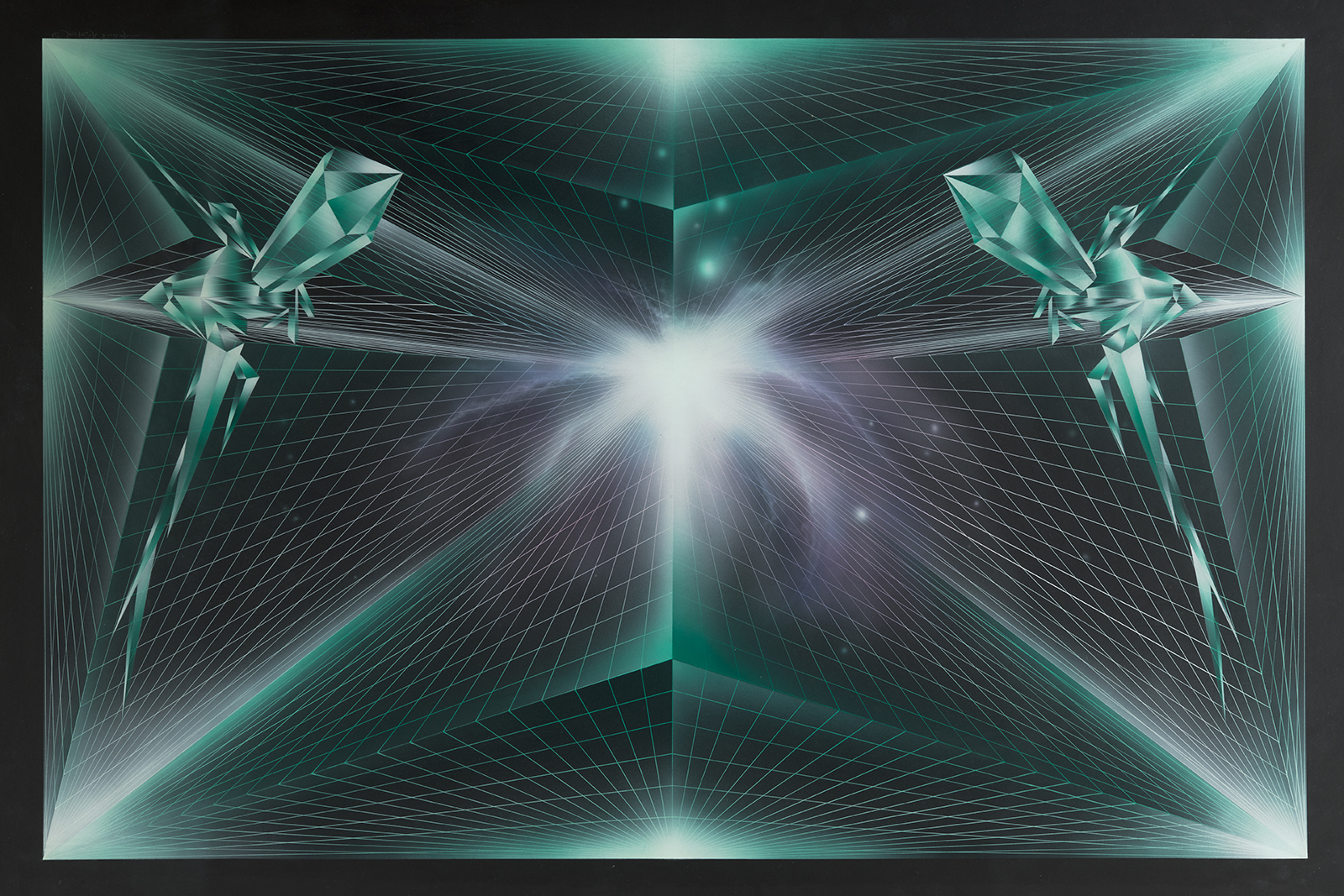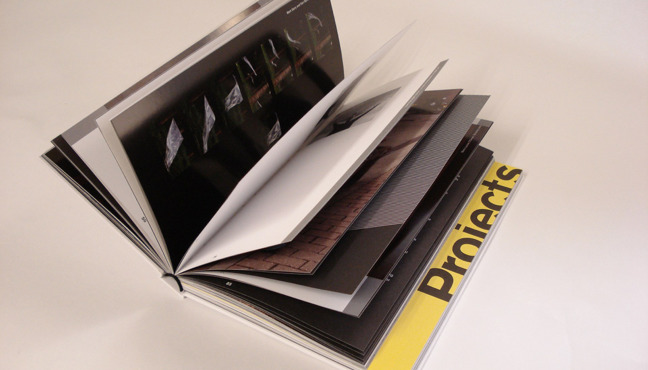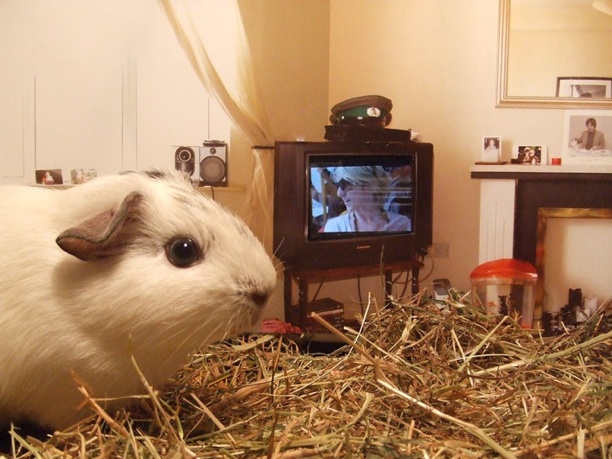Embracing the Machine
House Projects was a series of seven exhibitions spanning five months over four cities, three countries, and two continents; with the participation of seven coordinators/curators, forty-nine artists and eight writers. Self initiated by practitioners outside of the resources of an institutional venue, it was conceived as an interdisciplinary collaboration between artists, curators and critics, intended to eschew established or hierarchical roles. The publication, which is the summation of that collaboration, serves as a document of the artworks that made up the exhibitions, alongside texts that alternately describe, react to, contextualise, or act as a critical response to the exhibitions.
Embracing the Machine
Notes on “Living in a Box”, an apartment exhibition of artworks by:
Michael Fortune, Vera Klute, Marie Louise Molly O’Dwyer.
Live Musical Performance On opening Night by Vaginal Vinyl.
In the last decade, the district known as the Liberties (where Lindsay House is situated) has been subjected to numerous architectural overhauls, all of which are integral to an ongoing process of gentrification. The area is currently characterised by a visually uncomfortable marriage – generic apartment complexes set alongside labyrinthine terraces of redbrick houses and cottages. While the topographic transformation of this area has contributed to the dissolution of what must be one of the last remaining swathes of ‘authentic’ or ‘old Dublin’, there still exists in this area, streets, terraces and timeless cul de sacs which appear to have remained untouched by the wandering hand of progress. These are the places where golden afternoon sunshine glows on red brick, and the sonance of children playing seems to echo over the tolling of an imagined Angelus bell. The endurance of these pockets of the past has seen them transformed, gradually, from commonplace to anomalous – their imminent obsolescence ever more emphasised by the mushrooming of innumerable new incursions.
Most of the new housing blocks rising from these terraced warrens appear to have been designed and constructed to be as inconspicuous as possible. They epitomise quiet, polite, unambitious architecture. The blandness typifying these new residential developments might have been avoided if they had been built several storeys taller – as scale alone could have transformed them into exhilarating and awe-inspiring high-rise monoliths.
However, general reluctance has met almost all plans to alter the squat Dublin skyline any way other than incrementally. This is perhaps unsurprising, considering the impact such buildings would have upon surrounding topography, not to mention the fact that past experiments with residential High Rise architecture in Dublin failed disastrously. Though the last decade has, admittedly, brought something of a turnaround, Dublin still isn’t a city renowned for innovative urban design (or re-design) and the prevalent style of building, typified by Lindsay House, betrays a compulsion to eschew a purist, functional aesthetic in favour of a moribund mongrel provincialism that betrays a resistance to embracing an architectural idiom that is ambitious and forward-looking. Conceived with the enduring template of the semi-detached house in mind, these buildings make no statement, have no identity and – worst of all – are inefficient. They are designed merely to vanish into – as opposed to impose upon – the surrounding environment. Assuming that architectural environments dictate one’s movements and influence one’s state of mind it is not outlandish to assume that bastions of mediocrity such as Lindsay House function as instruments to subliminally suppress personality and curtail idiosyncrasy. Several of the artworks on display in “Livin’ in a box” certainly corroborated that this notion is more than merely a paranoid fancy.
From the point of entry this domestic exhibition immediately provoked questions regarding the way in which artwork is encountered and consumed today. The ‘dual function’ assumed by Apt. No. 27 during the duration of the exhibition resulted in a degree of confusion regarding how one should view the artwork. Upon arriving I wondered if I should simply observe received gallery etiquette and wander freely about, gazing at the artwork and the surroundings, or perhaps sit politely until directed to peruse by the curator/householder/hostess? Perching on the sofa in the living room-cum-kitchen (where the majority of the artworks were displayed) I realised that the modest size of the apartment actually permitted me to do both simultaneously. Immediately, my eyes alighted upon a large television, one of the unavoidable centrepieces of the room. Upon the screen could be seen a room which – initially – appeared identical to that in which I was seated. The assumption that I was simply viewing pre-recorded CCTV footage was swiftly dashed by the realisation that the floor of the “living room” on screen was strewn with hay or some similar material.
When a rodent (which I soon learned was, appropriately enough, a guinea pig) appeared unexpectedly and began bounding and shuffling about this “living room” it became quickly obvious that I was actually viewing a laboriously constructed simulacra of the space in which I was sitting. Transfixed as I was to by this spectacle of a rodent padding around the perfect miniaturised mimeograph, it was only when a slight movement in the corner of my eye diverted my gaze that I became aware that the fastidiously reconstructed set upon the TV screen was in fact, located within a cage atop the refrigerator. Two miniature closed circuit cameras were also installed within this cage and, in a bizarre bestial parody of reality TV, were relaying live surveillance of the oblivious, inexplicably menacing guinea pig.
Evocative of Bruce Naumann’s behaviourist experiments involving rats in mazes, this piece –entitled ‘habitat’- was further elaborated by the ingenious insertion of a miniature LCD monitor, which, placed within this ultra artificial Lilliputian environment, more than resembled a television set. Upon this miniature screen footage from the TV series House Hunters was being “broadcast”. Providing an audience of (potential) amateur property speculators with voyeuristic insights into the aspirations of others obsessed with either owning property or overhauling the property they do own, programmes like House Hunters are symptomatic of the surge in popularity of tele-voyeur-vision which seem to have become all the more prevalent and popular in recent years.
Though the rodent itself seemed oblivious to the jargon-peppered conversation between the presenter and first time property buyer, the addition of this appropriated footage gave the piece a specifically local argot, and the reframing of what passes as a “normal” TV show laid bare its absurd, disturbing reality. In effect, this habitat inadvertently amplifies and relays the actuality that contemporary living constitutes an uncanny fulfilment of the fantastical voyeuristic dystopias devised by Orwell and Huxley. Confidently avoiding overt polemics, critical exclamations, or any inclination to insert himself into the ménagerie, Fortune’s knowing reticence permits the carefully selected, tenuously associated and strategically assembled components to speak for themselves.
Though the “rhetorics of surveillance” may be absent, there is an undeniably voyeuristic quality to Vera Klute’s video piece Hum Drum (also exhibited in the living room) in which we, the viewers, become the undetected spectators of a series of quotidian actions, all of them confined to identical domestic interiors. The stylistically distinctive coupling of film and animation characterising this work sets up an immediate tension between the (animated) habitat and (filmed) inhabitant(s). This initial suggestion of “friction” is swiftly emphasised and confirmed as a female figure (the artist herself) paces restlessly back and forth, seemingly without purpose, through soulless living spaces. To allow us multiple perspectives the screen sporadically divides into compartments featuring stark animated depictions of daily occurrences; taps drip, washing machines spin, and vacuum cleaners are mechanically pushed and pulled to and fro. Corresponding to this montage of domestic events is a cacophony of sounds which do not imitate but indicate household appliances, their amalgamation creating a maddening din, aptly redolent of an industrial production line.
As this piece unfolds, one’s perspective becomes increasingly fragmented – the solitary, isolated and housebound protagonist is duplicated, her multiple ‘replicas’ simultaneously performing a variety of everyday chores while others stare listlessly at the walls of identically furnished environments. The piece also makes particularly effective use of the Droste effect-seen when our “protagonist”, sitting before a TV set, views infinitely recursive images of other identical girls, sitting in identical rooms with identical furnishings, viewing themselves on identical television sets. This reduction of the protagonist to an anonymous clone disrupts whatever vague narrative the piece initially had – but even more importantly, implies that the desperation with domesticity dramatised by an initially individualised figure is, in fact, pandemic. Hum Drum climaxes in an anxious crescendo, the agitated actions of the multiplying inhabitant(s) indicating that for them, home is an etiolated “realm of the machine”, a site of incarceration and distress. Layered over the humming and drumming of the appliances in the climactic moments of this piece is an intensely shrill sound – suggestive of a kettle approaching boiling point – completing the tone of stifling claustrophobia and nervous tension.
The visual economy characterising this piece by Klute (and her other piece Life’s Like That, displayed in the bathroom) is undoubtedly the product of meticulous labour, and though there is initially a playful, perhaps humorous flippancy to the rigorously produced visual language, any suggestion of frivolity is dispelled by the discontented desperation displayed by the inhabitant(s) of this ‘hum drum’ world. Though the dismal drudgery that domestic living can entail is an issue central to this piece, it would be reductive to view the work as no more than yet another stylised exposé on the tedium of housekeeping. Ultimately, Hum Drum is a melancholic study of the sense of futility which arises from isolated ennui and quiet desperation. The centrality of sound to this piece indicates how the prominence of the mechanical clamour of appliances is intensified by the silent solitude of the inhabitants. Finally, this deceptively pithy piece underscores the increasingly prevalent paradox of contemporary life – that high-density urban living is anything but an antidote to lonely isolation.
“I look out from my window view-
There’s really nothing else to do […]
Look around and I can see-
A thousand people just like me”
-Bedsitter, Soft Cell 1981
If domestic routine was one of the many facets of Klute’s Hum Drum then it is certainly a central focus of Daytime/Night-time Gardening – one of 3 pieces exhibited by Marie Louise Molly O’Dwyer. Like the aforementioned works, Daytime/Night-time Gardening were notable within this apartment environment for their effective use of sound (in this case familiar local radio programmes) which, in combination with the blare from the previously mentioned pieces, flooded the apartment with an oddly familiar cacophony. Daytime Gardening and Night-time Gardening are essentially documentaries of performative actions taking place in a typical suburban back garden. As the presenter of a popular afternoon radio talk show rambles into yet another inanity, we covertly observe a young woman who initially appears to be doing nothing more than hanging laundry out to dry. When various miscellaneous objects – the most startling being a chandelier – are included with the laundry and “installed” upon the washing line the pitch of the piece becomes more unsettling. In both the daytime and nocturnal sequences, these antics are viewed through a window from the interior of a living room, with the Night-time sequence allowing our view into the inky darkness of the back garden to include the reflected image of a man far too ensconced in his newspaper to notice the odd events which unfold outside.
The piece evokes the work of Mierle Laderman Ukeles, whose various “sanitation performances” and Maintenance Art Manifesto (1969) exemplify how she deemed every aspect of her “working” life – as a mother, wife, woman, and artist – as constituting a form of “Art”. Illustrative of how the most tedious of situations may be enhanced through the cultivation of idiosyncratic (if ultimately pointless) tactics of resistance, Daytime / Night-time Gardening also suggests that the subversive activity of the protagonist is a symptom of abject frustration – a neurotic impulse revealing the potentially destructive strain of the double burden. In this sense, the work reflects upon the fact that despite sporadically cyclical waves of change and dissent throughout the past century, prevailing concepts of home and domesticity remain dictated by rigid and oppressive codes defined and determined by gender.
I was swayed toward this latter reading by the inclusion of another video piece by O’Dwyer entitled Suffocation. Again comprising documentary footage of a performative process, Suffocation – which is reminiscent of the ritualistic physical experiments of Abramovic and Burden during the early/mid 1970’s – involves the artist repetitively submerging her head under water. The unrelenting reiteration of this rhythmic gesture has the performer gasping for air each time she surfaces from her submergence. Though in other circumstances a work such as this might be open to multiple reading, the decision made by the artist and curator to insert the screening monitor into the oven (so that it was viewed through the glass) demonstrates how the site of this exhibition, and the considered placement of the artworks within it, manipulated the viewer’s encounter and interpretation. Positioned within the oven this particular work also became a further investigation of the stifling dehumanisination of solitary domestic labour, and the unrelenting isolation and desperation which ensues – evidently a theme present to varying degrees in all the work featured in this show.
The overall impression of this exhibition was striking – the body of work selected being unified by several concerns, all of which were accentuated by the exhibition environment itself. As Morrissey herself states in the text, which accompanied the exhibition, this show was conceived to embrace the challenge of exhibiting artworks in a small urban space. In transforming her own apartment into a site of encounter, while avoiding the temptation to simulate a consecrated gallery space, Morrissey was certainly successful in achieving her aims. The exhibition’s refusal to distance itself from the domestic environment, coupled with the nature of the work, draws attention to the stark reality that home itself is – ironically – often the very place where torment, incarceration, anxiety and distress are suffered to the most extreme of degrees. Yet though “Livin’ in a box” was essentially a necessarily pessimistic statement on how, and where, life is lived today, there was a certain duality to the exhibition, and humour was certainly present in almost all the works on display to some extent. Even aside from the artwork on display, the actual incidence of being a visitor to this exhibition environment was not without its unheralded uplift. For instance, the integration of appliances afforded this particular viewer with an opportunity to reflect (admittedly, not for the first time) upon the modern wonders of white goods and washing machines, and to realise that – despite the negative connotations of our increasingly mechanised existence – it is precisely inventions such as these which afford us all the time and energy to create, to cultivate and to produce. In this sense the experience of “Livin’ in a box” was as agonisingly and exquisitely contradictory as the experience of living itself. It served as an affirmation of both the richness and the futility of human experience, within the most prosaic of environments.
Also emerging from the exhibition was the realisation that there are several analogies to be drawn between an artist enduring countless viewers – both strangers and intimate acquaintances – examining and critiquing their work, and a householder inviting a general public into their sacrosanct living quarters – one might even say that this exhibition constituted a work of process art on behalf of the curator. In addition to using almost every space available to transform her apartment into a site of cultural production and consumption, Morrissey also opened up her home to viewing visitors for one week, allowing her entire apartment – even spaces not utilised for the exhibition of work – to be scrutinised as integral to the entire display. Finally, though evidently there is a need to represent the stifling systems which accompany – literally – living in a box, this exhibition as a whole served as a case in point in demonstrating how even the most anonymous, generic and spatially limited living space can be converted into a locus of unrestricted potential and endless elucidation. The premise of sequestering domestic space as an art environment may not be new in itself, but I believe that this particular “d8 constituent ” of the wider “House” project must be acknowledged as particularly pertinent in terms of underscoring the chronic lack of spaces available in which art workers can collaborate and exhibit. Moreover, that this exhibition was installed in The Liberties area is also appropriate in that it emphasises how, thanks to the accelerated affluence, which Ireland has enjoyed throughout the past 15 years, an expanded art scene has emerged in tandem with an over-inflated and extremely competitive property market.
Hopefully initiatives such Livin’ in a Box, and the project of which it is a part, will continue to flourish and extend, so that the hum drum dwellings of Dublin might continue be elevated-albeit temporarily-from mere ‘property’ into sites of stimulating dialogue and constructive exchange.



































































































































































































































